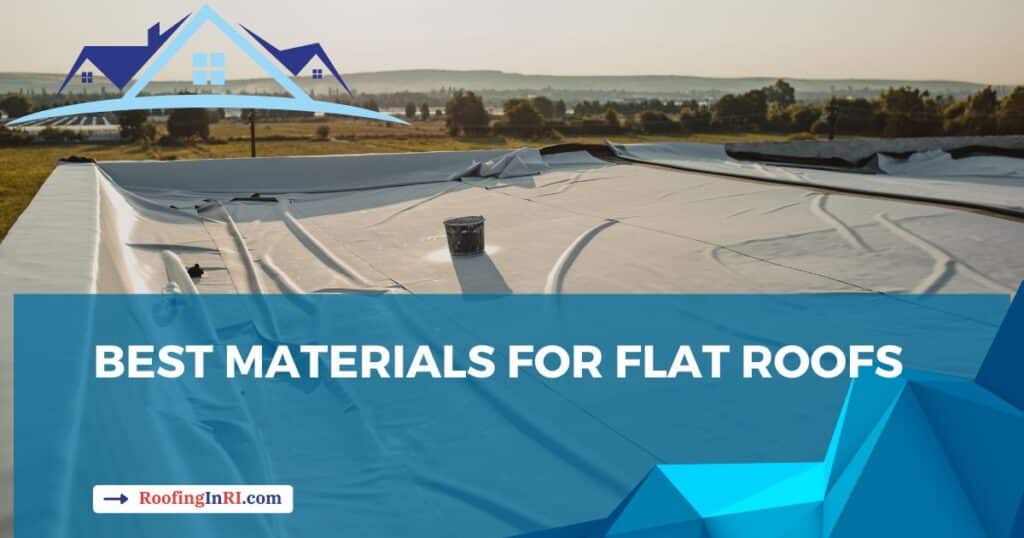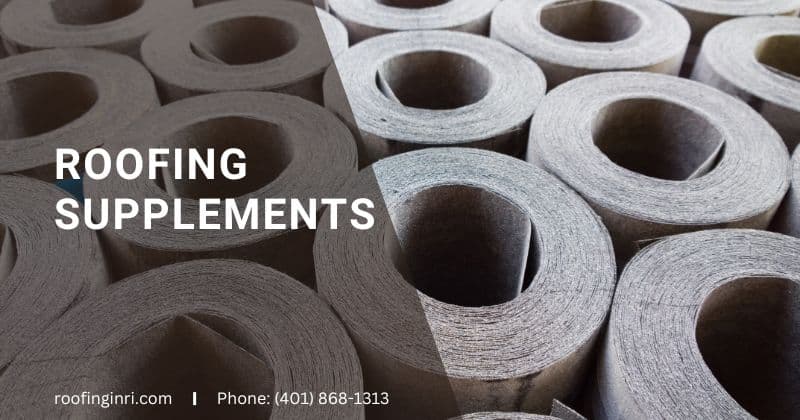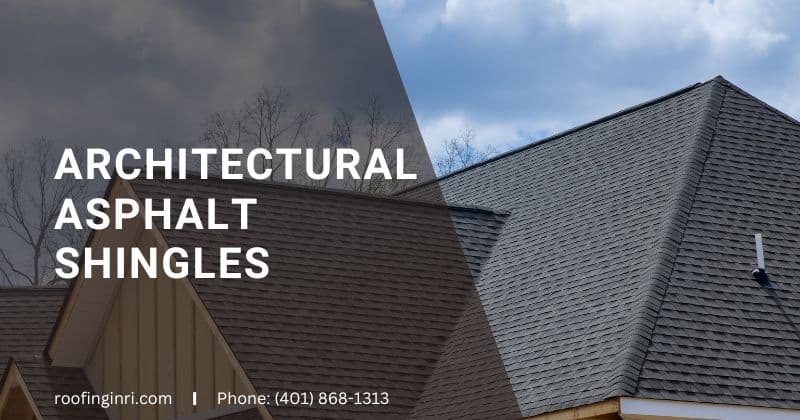In flat roofing, water pooling is a common problem. Choosing the suitable roofing material for a flat roof is crucial to ensure waterproofing, durability, energy efficiency, and overall performance.
As a roofing contractor in Rhode Island, we aim to educate and help homeowners make the right decision.
I will introduce some of the best flat roof materials in this post. Please note that we are not an affiliate partner with any roofing material producers.
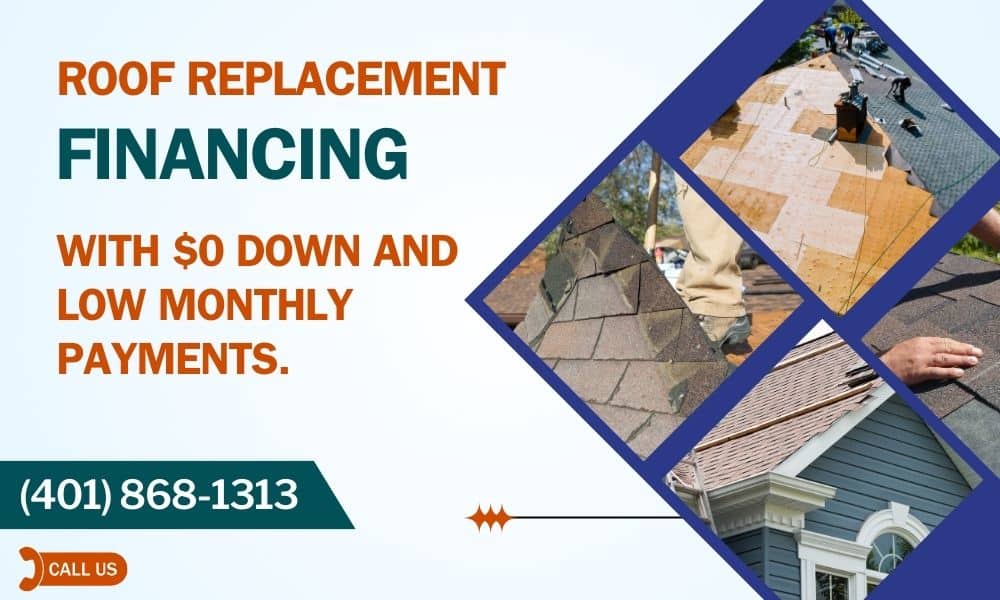
Let’s get started.
EPDM (Ethylene Propylene Diene Monomer)
EPDM is a synthetic rubber roofing membrane. It’s durable and resistant to UV rays. It is typically available in large rolls. It’s black and absorbs hits.
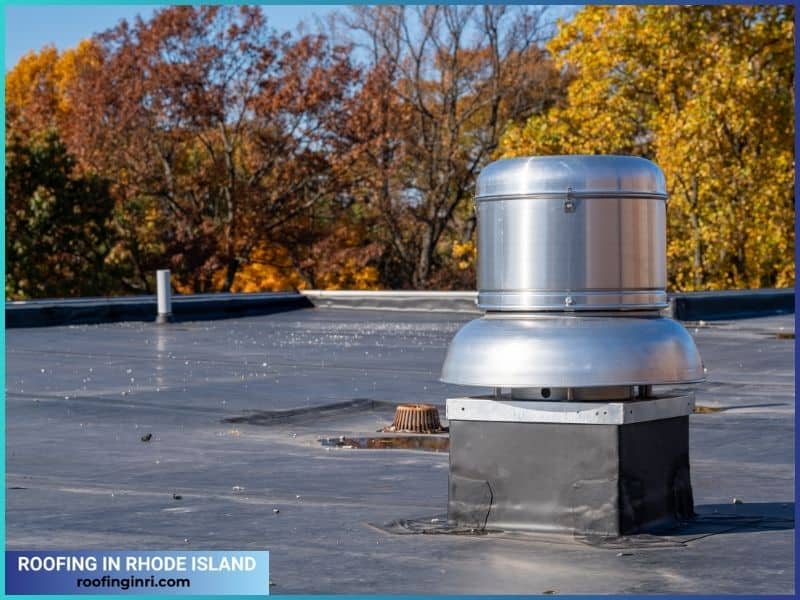
EPDM stands for Ethylene Propylene Diene Monomer. Sometimes, you may hear about “Ethylene Propylene Diene Terpolymer.” While both terms refer to the same type of synthetic rubber material, “monomer” in EPDM signifies the polymerization process involving two monomers: ethylene and propylene. The term “terpolymer” implies three monomers, which would be incorrect in the case of EPDM.
Here are some critical aspects of EPDM membrane roofing systems and why they are best for flat roofing:
- Durability: EPDM roofing membranes are highly durable and can withstand various weather conditions, including sunlight, hail, and temperature extremes. They have excellent ozone and UV radiation resistance, contributing to their long lifespan.
- Flexibility and Elasticity: EPDM is known for its flexibility and elasticity, allowing it to accommodate building movements and temperature fluctuations without cracking or becoming brittle. This flexibility is essential for flat roofs, where materials may be subjected to more stress.
- Installation: EPDM roofing is typically available in large rolls, making installation more efficient, especially on flat roofs with fewer seams. The seams can be sealed using adhesive or specially formulated tapes.
- Low Maintenance: EPDM roofing systems are relatively low maintenance. They are resistant to mold growth, and repairs are often straightforward in case of damage. Regular inspections and simple maintenance routines can help extend the roof’s lifespan.
- Energy Efficiency: EPDM roofing membranes often have reflective properties that can help with energy efficiency by reducing heat absorption. This can contribute to lower cooling costs in warmer climates.
- Cost-Effective: EPDM can be a cost-effective option compared to other roofing materials. Its durability, longevity, and ease of installation contribute to its overall value.
- Environmentally Friendly: EPDM is a recyclable material, making it an environmentally friendly choice. Its production process generally has a lower environmental impact than other roofing materials.
- Compatibility with Insulation: EPDM roofing systems can work well with various insulation materials, contributing to energy efficiency and providing additional benefits for temperature regulation.
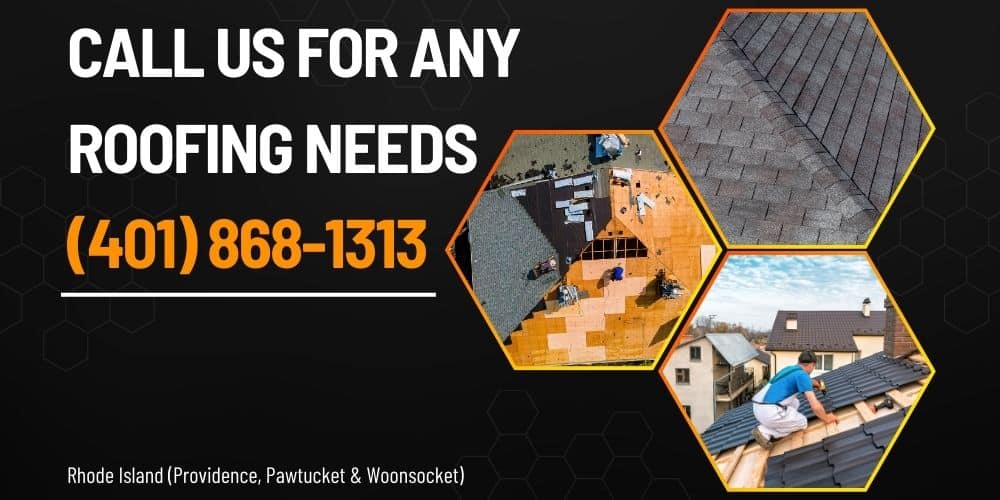
While EPDM has numerous advantages, it’s essential to consider factors like proper installation, insulation, and local climate conditions. Consulting with roofing professionals can help determine whether EPDM is the right choice for a specific flat roofing application.
Related: Unlocking the benefits of EPDM membrane roofing systems for your home
TPO (Thermoplastic Polyolefin)
TPO is a single-ply white membrane made of polypropylene and ethylene-propylene rubber. It is energy-efficient, durable, and resistant to UV rays. Its color is white and reflects hits instead of absorbing.
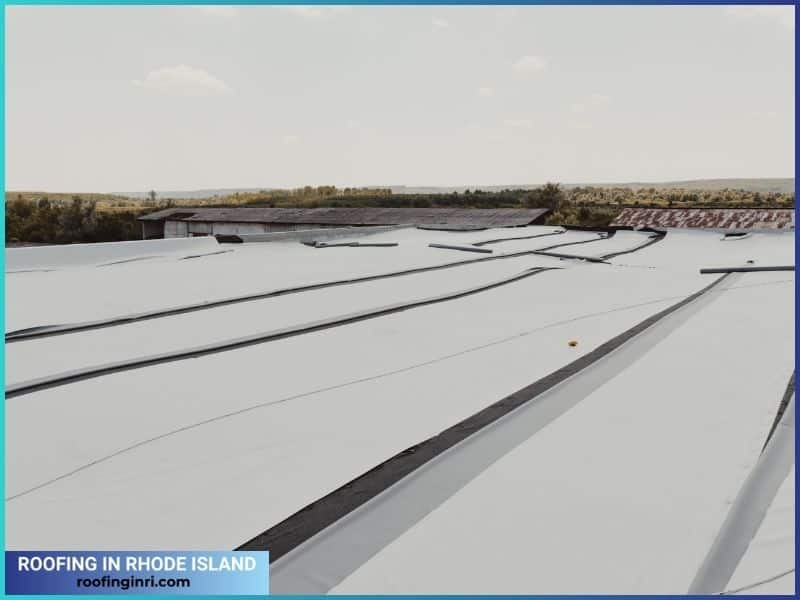
Thermoplastic Polyolefin (TPO) roofing membranes are widely used for flat and low-slope roofs in commercial and residential settings. TPO offers a flexible, durable roofing solution composed of polypropylene and ethylene-propylene rubber. Available in various colors, with white being famous for its high reflectivity, TPO contributes to energy efficiency by minimizing heat absorption and reducing cooling costs.
Installation of TPO is relatively straightforward, as the membranes come in rolls and can be attached to the roof substrate through methods like mechanical fastening, full adhesion, or ballasting.
TPO roofs exhibit resilience against UV radiation, ozone, and chemicals and resist tears and punctures. The seams of TPO membranes are heat-welded, ensuring strong and watertight bonds that enhance the roof’s overall integrity.
Read also: 10 essential tips for roof maintenance and repairs
PVC (Polyvinyl Chloride)
PVC roofing membranes consist of two layers of PVC material with a layer of polyester reinforcement sandwiched in between. They are known for their durability, chemical resistance, and reflective properties.
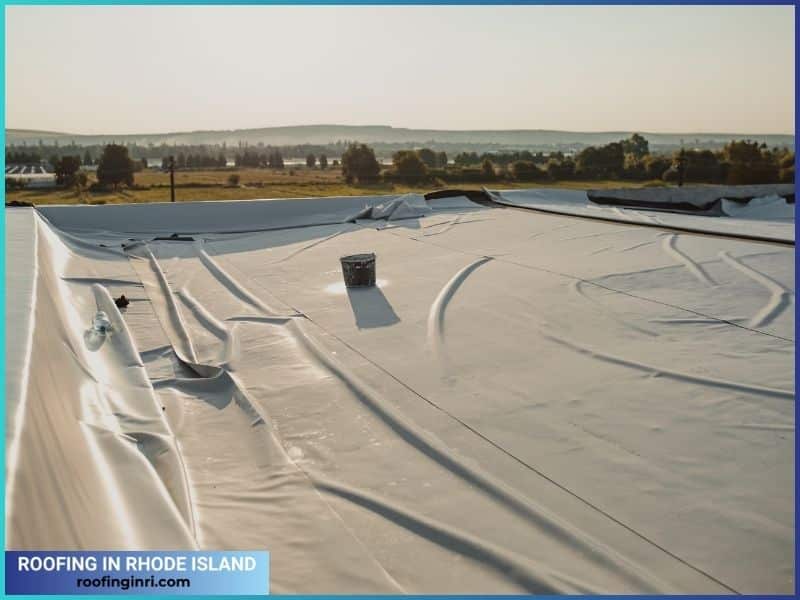
Polyvinyl Chloride (PVC) membrane roofing is a versatile single-ply material for flat or low-slope roofs. Composed of layers of PVC with a reinforcing layer, PVC roofing is resistant to chemicals, UV radiation, and harsh weather conditions.
Its flexibility allows it to adapt to building movements. PVC membranes come in various colors, with white offering high reflectivity to reduce heat absorption and enhance energy efficiency. The seams are either heat-welded or chemically bonded for a watertight seal, ensuring the longevity and integrity of the roof.
Read also: 5 Best roofing shingles brands
Standing seam metal roof
It’s a popular and durable option known for its distinctive vertical seams. Consisting of metal panels with raised seams that interlock, standing seam roofs are commonly made from materials like steel, aluminum, or copper.
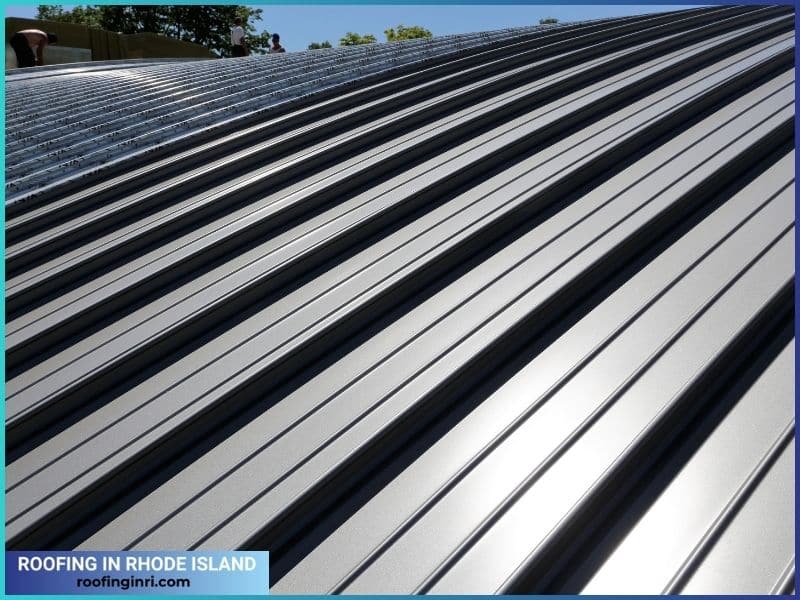
The raised seams contribute to the roof’s weather resistance and shed water effectively. This roofing type is characterized by its clean, modern appearance and is suitable for various architectural styles. Standing seam metal roofs are known for longevity, low maintenance requirements, and energy efficiency.
They are often chosen for residential, commercial, and industrial buildings, offering a combination of aesthetic appeal and practical benefits.
Read also: Replace vs repair a roof: 7 crucial factors to consider before you decide
Conclusion
There are other materials for flat roofs, such as Built-Up Roofing (BUR), Modified Bitumen Roofing, etc. The above materials are the best according to our experience.
EPDM will be a great choice if you’re replacing your roof for a non-living space. For living space, TPO or PVC are what you need. Standing seam metal would be perfect if you have a reasonable budget and want more lifespan.
Ready to elevate your home’s protection and curb appeal? Call us at (401) 868-1313 today for expert roofing solutions in Rhode Island (Providence, Pawtucket & Woonsocket) – because your roof deserves the best care it can get!


